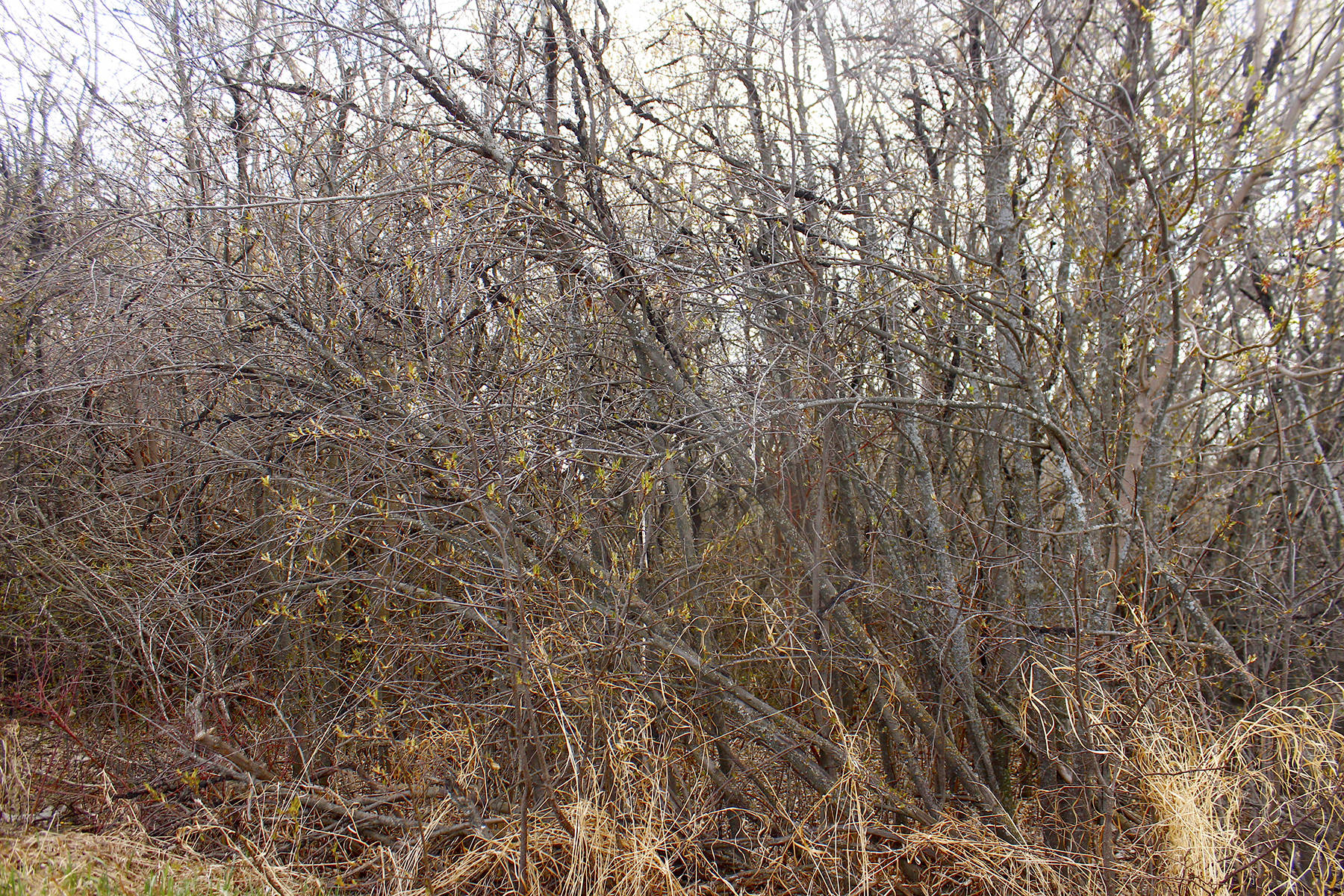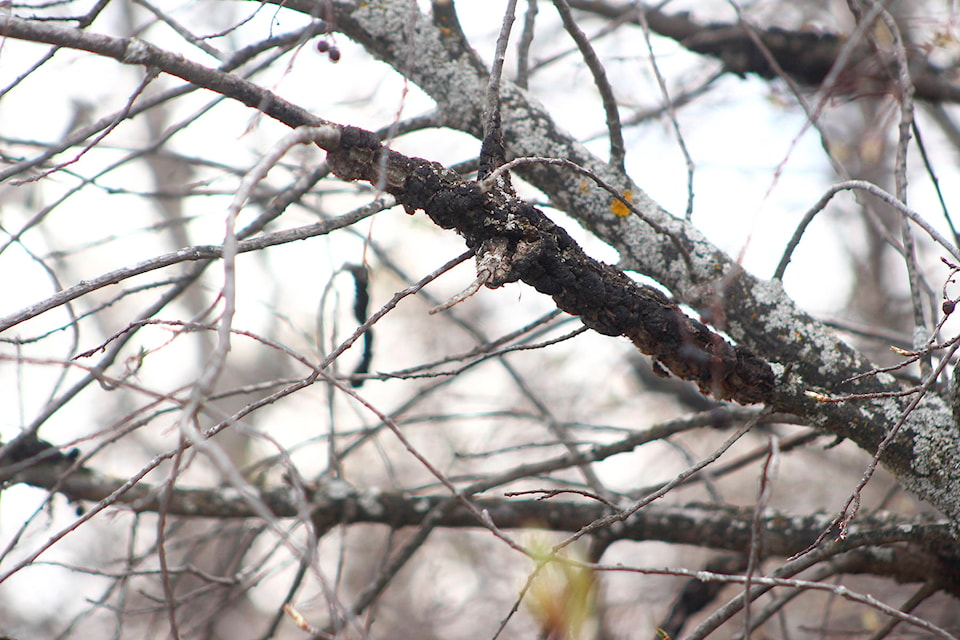If you’ve taken a walk along the Battle River walking trail in Ponoka lately, you may have noticed a less-than-attractive, bumpy black infestation covering the branches of some of the shrubs in the area.
It’s called ‘Black Knot’ and is caused by a fungus. The disease is common in berry or fruit bearing trees or shrubs and infections spread rapidly.
“The Town of Ponoka regularly surveys town-owned land for Black Knot and treats infected trees and shrubs in the fall, winter and early spring in the river valley, town parks and along boulevards,” said communications manager Sandra Smith.
“It’s part of our regular maintenance schedule.”
According to Smith, the majority of land along the river is privately owned.
“If Black Knot is identified on private land, we try to contact the landowner to provide education on what the disease is and how to best treat it,” said Smith.
“Our goal is to prevent the spores from spreading, and we encourage members of the public to report Black Knot sightings to us if they see it on town-owned land.”
To report a sighting of Black Knot on town-owned land, citizens are invited to submit an online service request through the town website, ponoka.ca.
Click the E-Service button under ‘Online Service Request’ and fill out the online form. It’s fast and easy or call 403-783-4431 for assistance.
You will receive notification once action on your request begins and when it’s completed if you provide an email address with your request.
According to alberta.ca, a survey completed in Alberta found significant and widespread Black Knot infections in commercial, municipal, private and natural plantings.
“This disease reduces the aesthetic value of affected specimens, as infections spread rapidly; high levels may result in the eventual death of the plant,” states the website.
“The most distinguishing symptom of Black Knot is the characteristic black, tar-like swellings that develop on branches of the infected plant.”
The infections begin as small, olive-green galls or swelling and take two-to-three years to mature.
As mature galls can produce a large amount of spores during the bloom period, it is recommended to remove them during late fall, winter or early spring when plants are dormant.
To effectively remove Black Knot, knot-bearing branches must be pruned at least 15 to 20 cm below the knot, or to a healthy collar.
Diseased wood should be burned, buried or removed immediately as diseased knots can produce and release spores for up to four months after removal.
For more information about Black Knot and how to remove it, visit www.alberta.ca/black-knot.aspx.

